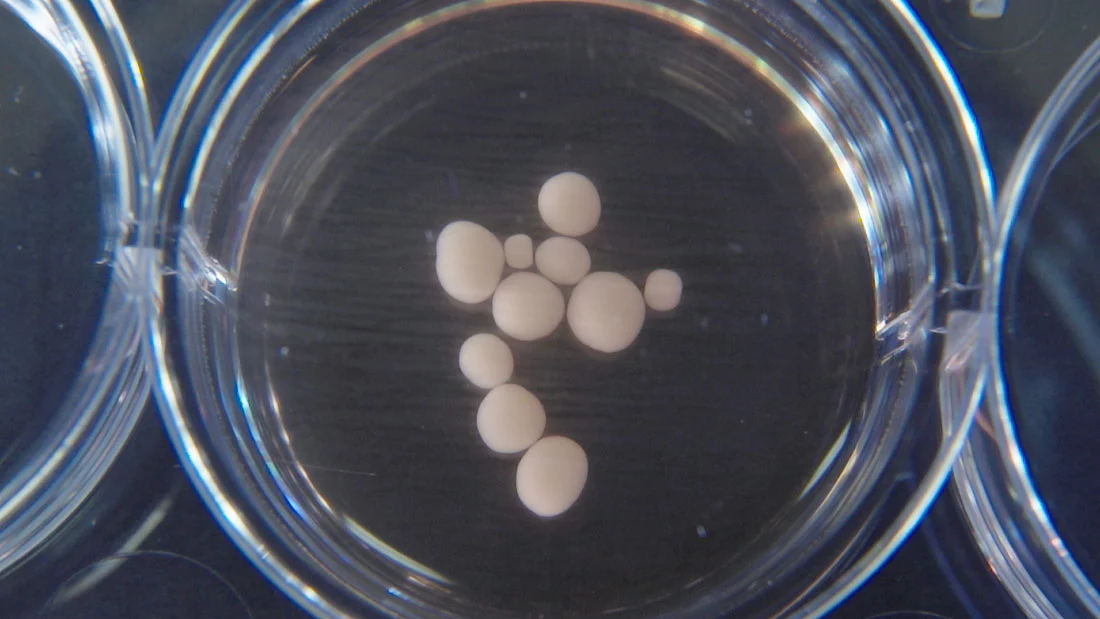Scientists have been growing miniature models of human brains in the lab for a few years, and now it seems these organoids have passed a pretty major milestone. Researchers from the University of California (UC) San Diego have created the most advanced mini-brains yet – and apparently, they’ve begun producing brain waves that resemble those of preterm babies.
Mini-brains – known more officially as cerebral organoids – are pea-sized lumps of human brain tissue, with a cellular structure that’s remarkably similar to the real thing. They’re made by placing human pluripotent stem cells into a culture that mimics the environment of a developing brain. That tells the stem cells to begin forming different types of brain cells, and arrange themselves into the right 3D structure. The end result is basically a tiny, primitive brain.
Except these tiny brains are getting less and less primitive. The researchers on the new study say they’ve created the most advanced, mature mini-brains yet. That’s thanks to a better procedure for growing the stem cells, as well as an optimized formula for the culture they’re grown in.

Over 10 months, the researchers grew several hundred of these mini-brains, with the new formula allowing them to develop better networks of neurons and synapses. Electrode arrays were used to monitor electrical signals they produced.
And sure enough, around the two-month mark the team noticed something: bursts of brain waves. While other electrical signals have been detected in other organoids, this is the first time any have produced brain waves. At first, the signals weren’t very common or complex, but as the organoids developed the brain waves became more regular and occurred at different frequencies.
“Based on neuronal activity and network formation, we have hundreds of thousands of times more activity than what was previously reported,” Alysson Muotri, an author of the study, tells New Atlas.

Intriguingly, these brain waves appear similar to the patterns of activity seen in the brains of premature babies. To test that connection, the researchers trained a machine learning algorithm on brain waves recorded from 39 preterm bubs, between 6 and 9.5 months old. Based on their brain waves, the algorithm managed to predict how many weeks old the organoids were. That indicates that the two are quite similar.
Growing more accurate models of the human brain is the goal of these organoids – but what ethical issues does that drag up?
Conscious mini-brains?
If these organoids have developed to about the level of premature baby brains, the logic follows that eventually, lab-grown brains could advance through the other stages of human development. The end result could conceivably be self-awareness or even consciousness. At that point, we would have a duty of care to these “beings,” and using them to study brain injury or disease would require considered ethical debates.
“As we get closer to the human brain, more ethical concerns will appear,” Muotri tells us. “If we find that these organoids have some kind of consciousness, self-awareness or feel pain, they will probably need to have a ‘moral status.’ This means that the research will have to be more regulated, similar to what we do with animal models for example.”
Luckily, the team says that it’s unlikely that the current batch of mini-brains have any of those higher-order faculties. These are still fairly rudimentary models after all, still lacking some vital parts of the brain as well as sensory input from things like like vision or hearing. Without these, the mini-brains might never get to that tricky stage of development.
The intriguing study was published in the journal Cell Stem Cell.
Source: UC San Diego




